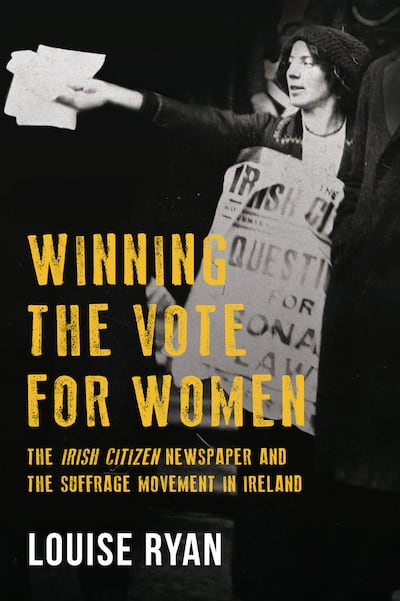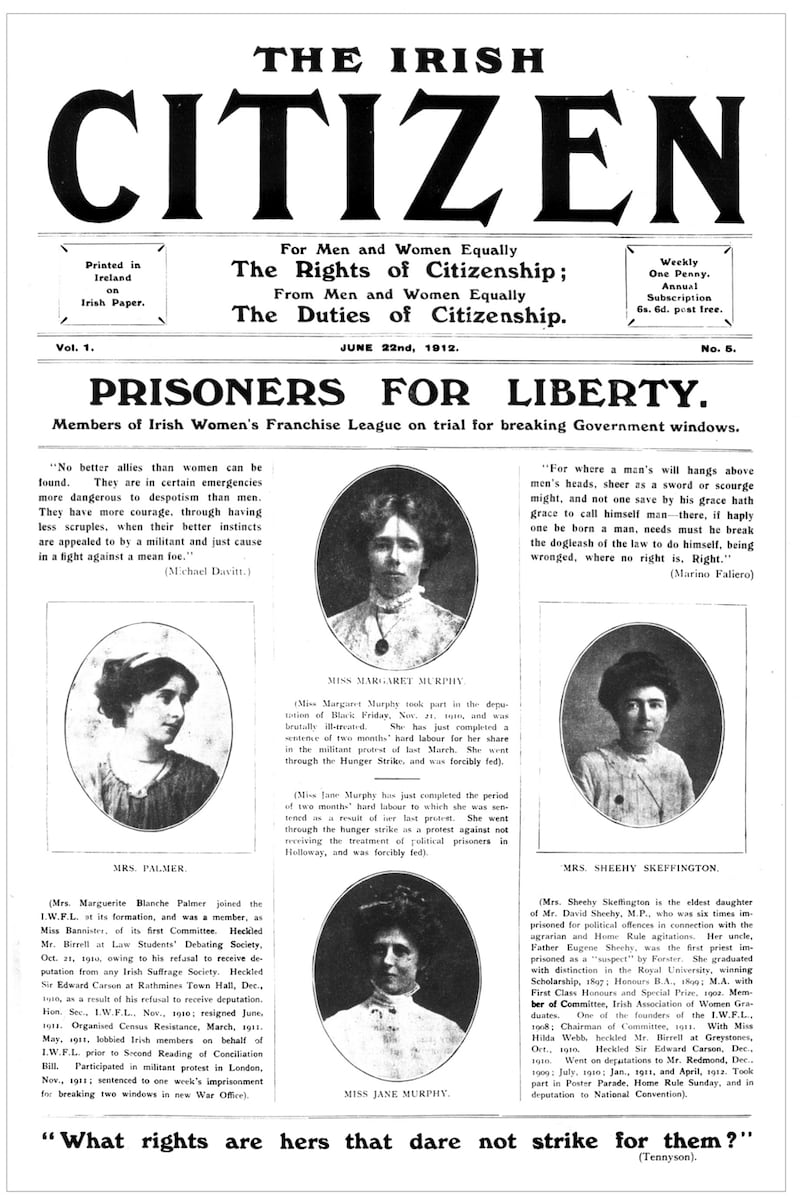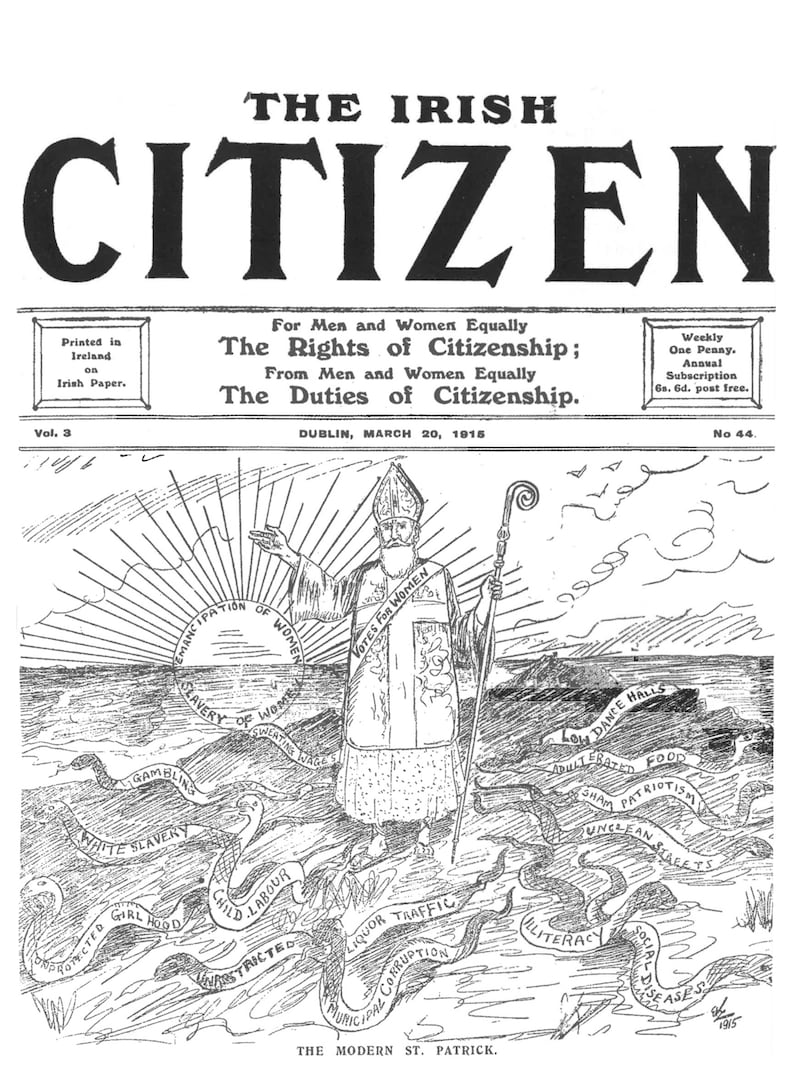
In order to achieve change and make progress in any democratic society it is necessary to have open and frank debate in which different voices and opinions can be heard. A frank exchange of views can be healthy and constructive in an atmosphere of mutual respect. In Ireland, in recent years, indeed in recent months, we have witnessed some grown-up discussions about deeply controversial and potentially divisive topics. People don’t all have to agree with each other but, at least, they need to listen and tolerate differences of opinion.
The extent to which these conditions prevail tells us a lot about a society. Unfortunately, in the past, in Ireland, there was a tendency to silence difference and to exclude or shout down those who dared to express opposing views.
It was precisely in this kind of hostile atmosphere that the suffrage movement operated.
It says a great deal about the courage and determination of these plucky women (and some men) that they braved ridicule, threats of physical assault and verbal abuse to stand up and express controversial points of view.
As well as being heckled and shouted down in public meetings, the suffragists also encountered hostility from many in the mainstream press. Concerns about how the suffrage cause was either misrepresented or ignored by national and regional newspapers led some suffrage campaigners to believe that they needed their own weekly paper. Hence in 1912, the Irish Citizen newspaper was born.
This newspaper enabled suffragists to promote their cause, to report on their meetings, advertise forthcoming events, express their views and generally ensure that the suffrage campaign was given a fair hearing. In addition to regular news items and editorial pieces, the Irish Citizen also published articles in which suffragists used a feminist lens to analyse some of the key problems facing Irish society. Many of these articles raised deeply controversial issues such as domestic violence and the raft of abuses taking place behind closed doors in early 20th-century Irish society. Thus, the Irish Citizen is an invaluable record of suffragist writing and activism.

But suffragists were not content to merely sit in their cosy sitting rooms and write about social problems. Many also sought to raise awareness about these issues through public lectures across the country.
While the suffrage movement is often assumed to be a largely urban movement with campaigns concentrated in Dublin, Belfast and Cork, in fact, there were numerous events in small towns around the country. For example, as the work of Mary Clancy shows, there were many suffrage events and meetings organised around Galway and the west of Ireland generally.
Several articles in the Irish Citizen recount excursions into rural Ireland. These articles not only reveal the challenges of addressing controversial topics in largely conservative and sometimes hostile contexts, but also the powerful elites who exerted influence in small-town Ireland and forcefully sought to silence any opposing points of view.
In September 1913, the Irish Citizen carried a humorous report by the Cork suffragist Susanne R Day on her speaking tour of Kerry. Starting in Cahirciveen, Day and her colleagues had an attentive audience in the local Carnegie Hall. However, moving on to Waterville they had difficulties securing a venue and had to speak in the open air to a crowd composed of “fishermen, shopkeepers, farmers and farm labourers, telegraphists from the cable station, and English visitors. It was not an easy matter to pitch a speech in a key to ring harmoniously over such a mixed assemblage, but the meeting was held principally for the inhabitants, so we spoke directly to them” (September 20th, 1913).

One can only imagine what this crowd of curious onlookers made of the suffragist speakers. Nonetheless, they appear to have been given a fair hearing.
Such benign reactions were not guaranteed. Moving on to Valencia, Day and her colleagues encountered a vocal “anti-suffragist” who continually heckled their speech. However, Day, an experienced Poor Law Guardian, was used to the hurly burly world of political banter and gave as good as she got.
Similarly, in Killorglin many in the audience seemed to be ‘out for a lark’ and were ‘inclined to be facetious at first’. In addition, ‘one determined reactionary, in the front row, informed us several times that we should be at home’. Nonetheless, the women persisted with the meeting and concluded that the Kerry tour was successful. More than 130 pamphlets were sold and between 70 and 80 Friends of Suffrage Cards were signed.
This account of the Kerry tour clearly indicates the courage and tenacity of women in early 20th-century Ireland who defied public convention by address public meetings and confidently resisted male hecklers. However, it is in a report of touring in the west of Ireland that we see how powerful forces could conspire against the feminist cause.
In 1914 Margaret Connery and Hanna Sheehy Skeffington undertook a suffrage speaking tour in Longford, Carrick-on-Shannon and Boyle. From the start they encountered problems. In Longford the Catholic bishop refused permission to use the local hall. In Carrick-on-Shannon the women experienced a boycott.
“The canon had denounced us at First Mass on the Sunday previous, with other Lenten abominations… he advised the women of the town to remain at home, look after their families, and to have nothing to do with Votes.” (March 14th, 1914)
Hanna Sheehy Skeffington pointed out the irony that while suffrage was an abomination, the 32 pubs in the town did not seem to be ‘impaired by the Lenten season’.
Having failed to secure the Catholic Hall, the women then tried to hire the Protestant Hall but that too was surprisingly unavailable.
“The fiat having gone forth that suffrage was taboo, vestrymen, churchwardens, rectors, freemasons vied in putting us off with futile equivocation and shallow subterfuges, each shifting the responsibility on to the shoulders of someone else.”
In Boyle, the women found that the local priests were actually sympathetic and initially promised the Catholic Hall. However, this offer was later rescinded when ‘a local faction brought pressure to bear to prevent free-speech, threatened to wreck the hall, to cut off the lights, and make the speakers forever silent’. Behind these brutal threats, Hanna Sheehy Skeffington detected the hand of local politicians – ‘partly Hibernians (Ancient Order of Hibernians) had determined that by fair means or foul we should not be heard’.
To make matters worse, the local paper, which had agreed to print an advertisement for the meeting, ‘calmly announced, on its own, that the meeting would not take place’. In the end, despite these obstacles, the meeting went ahead when Rev J Watson agreed to give the women Clew’s Memorial Hall. The event was deemed a success:
“We won many converts, and uttered some home truths to the foul-mouthed ‘horse-blocker’ from Belfast who attempted heckling, only to cover his discomfiture with obscenities and to be repudiated by the decent minded people of Boyle for his pains (March 14th, 1914).”
These stories are amusing and quite entertaining to read. However, there is a serious undercurrent. Powerful groups made up of the churches (both Catholic and Protestant), local politicians and organisations like the Ancient Order of Hibernians, as well as local newspapers, conspired to silence these feminist activists. Even when they managed to overcome opposition and organise meetings, they were confronted by foul-mouthed hecklers and even threats of physical violence to make them ‘forever silent’.
One can only imagine the enormous courage and fortitude required to stand up on a soap box or a makeshift platform and raise controversial issues to a hostile or indifferent audience. That suffragists persisted in their efforts speaks volumes about their steadfast commitment to the cause of women's rights. Irish society has changed in many ways but the importance of breaking taboos and speaking out on controversial issue remains as important as ever.
Louise Ryan is Professor of Sociology at the University of Sheffield. Originally from Cork, she is the author of several books and numerous academic articles on the suffrage movement. Her book, Winning the Vote for Women: the Irish Citizen newspaper and the Suffrage Movement in Ireland, is published by Four Courts Press, 2018











